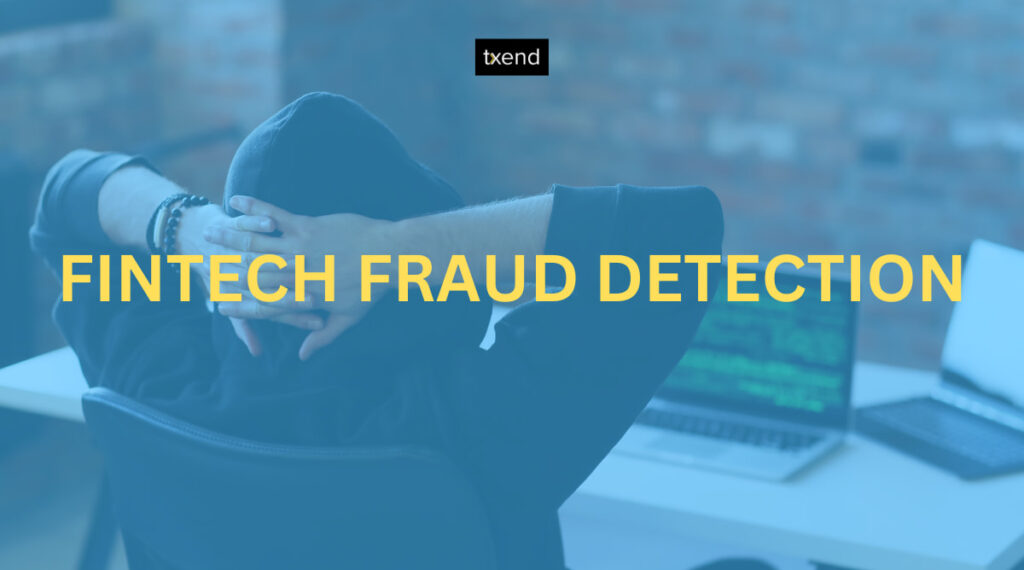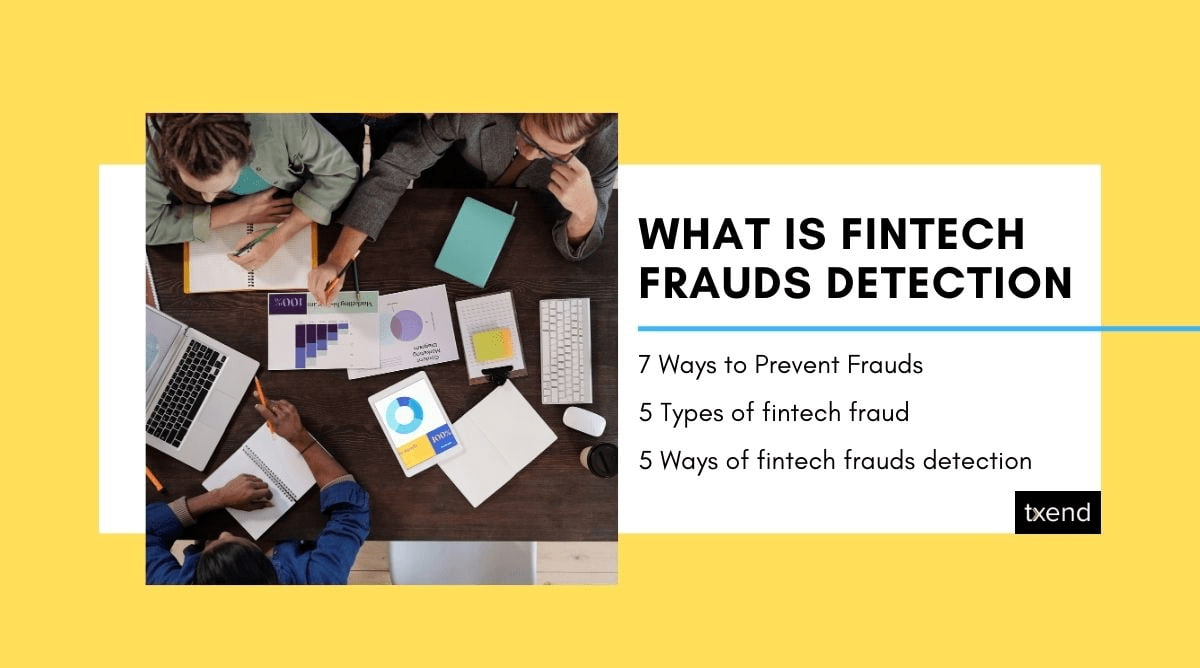The phrase “Fintech Frauds Detection” has gained significance in the quickly changing financial scene of today, when technology breakthroughs have ushered in a new era of comfort and accessibility.
The promise of efficiency and innovation comes with financial technology, or fintech, as it continues to transform the way we manage our accounts. However, it also presents new challenges, particularly in security and trust.
Fintech fraud detection

Fintech fraud detection, the primary focus of this article, is a critical component of safeguarding the integrity of fintech systems and transactions. In an era where fintech fraud prevention is paramount, understanding the intricacies of fintech fraud detection mechanisms is essential for individuals and institutions alike.
By delving into the nuances of fintech fraud detection and exploring effective strategies for fintech fraud prevention, we can confidently equip ourselves with the knowledge and tools needed to navigate this dynamic financial landscape.
This in-depth tutorial will explore a variety of topics related to fintech fraud detection, such as varieties of financial fraud, fintech PPP fraud, and the most recent methods for safeguarding your financial assets.
Join us as we explore the complicated concepts underlying fintech fraud detection and discover ways to avoid it in the always changing digital era.
Key Takeaways
- Fintech fraud involves deceptive financial activities using technology, aiming to gain unauthorized access or financial advantage.
- Types include social engineering, presentation attacks, synthetic identity, account takeover, and payment fraud.
- Detection involves AI, behavioral analytics, geolocation tracking, MFA, and real-time monitoring.
- Prevention includes MFA, education, real-time monitoring, updates, biometrics, compliance, and customer support.
- Benefits include enhanced security, reduced losses, trust preservation, compliance, cost efficiency, insights, and competitive advantage.
What is Fintech Fraud?
Fintech fraud in the United States refers to deceptive and illegal activities within the financial technology sector. It encompasses fraudulent practices specifically targeted at fintech platforms, services, and users within the U.S. financial ecosystem.
These fraudulent activities can involve various aspects, such as digital transactions, online banking, peer-to-peer lending, and more.
Fintech fraud typically includes tactics like identity theft, phishing attacks, account takeovers, and the use of counterfeit documents. Fraudsters aim to exploit vulnerabilities in fintech systems, steal sensitive information, and engage in illicit financial transactions.

The motive behind fintech fraud can vary, ranging from financial gain through unauthorized transfers or fraudulent loans to accessing personal information for future scams or identity theft. Fintech fraud poses significant financial risks to individuals and businesses and erodes trust in the rapidly growing fintech sector.
In response to the growing threat of fintech fraud, financial institutions, companies, and regulatory bodies in the United States continuously enhance security measures, implement advanced fraud detection technologies, and promote user education.
By making these efforts, the fintech industry hopes to protect users from fraudulent practices and preserve the integrity of its services.
5 Types of fintech fraud
In fintech fraud detection, understanding the various types of fraudulent activities in the United States is paramount. With its seamless digital transactions and rapid technological innovations, Fintech has become a breeding ground for innovative fraudsters.
Here, we’ll explore the five distinct types of fintech fraud prevalent in the U.S. landscape:
Social Engineering:
Social engineering fraud uses tricks to trick people or organizations into giving up private information or acting in a certain way.
In the fintech industry, scammers may pose as reputable organizations like banks or government agencies to deceive customers into disclosing private information like login credentials or personal data. Awareness and vigilance are vital in thwarting social engineering attempts.
Presentation Attacks:
Presentation attacks are a more sophisticated form of fintech fraud, often involving manipulated or counterfeit documents to establish false identities.
In the U.S., this type of fraud can manifest in various ways, such as falsified tax records or identity documents submitted during loan applications. Fintech platforms must employ advanced document verification methods to detect presentation attacks.
Synthetic Identity Fraud:
Synthetic identity fraud is a particularly insidious form of fraud wherein perpetrators create entirely fictitious identities by combining real and fabricated information.
These synthetic identities are then used to open bank accounts, apply for loans, or engage in fraudulent financial activities. Detecting synthetic identity fraud requires sophisticated algorithms and data analytics to spot inconsistencies and anomalies.
Account Takeover:
Account takeover (ATO) occurs when fraudsters gain unauthorized access to a user’s fintech account. They may do this through phishing attacks, stolen credentials, or other means.
Once inside, they can manipulate transactions, steal funds, or perpetrate other fraudulent activities. Multi-factor authentication (MFA), a powerful authentication method, is crucial in the fight against ATO.
Payments (ACH) Fraud:
Automated Clearing House (ACH) fraud involves the unauthorized transfer of funds from one account to another. In the U.S., this type of fintech fraud often targets businesses that rely on ACH for payroll and other financial transactions.
Fraudsters may intercept or alter ACH payments to divert funds to their accounts. Encryption, secure channels, and robust authorization protocols are critical in mitigating ACH fraud.

In an era where fintech is at the forefront of financial services, staying ahead of these fintech fraud types is essential for both individuals and organizations. Effective fintech fraud detection and prevention strategies involve advanced technology, user education, and regulatory compliance.
By understanding the nuances of these fraud types and implementing proactive measures, we can collectively work towards a safer and more secure fintech ecosystem in the United States.
5 Ways of fintech frauds detection in the USA
Detecting fintech fraud in the USA involves a combination of advanced technologies, data analytics, and vigilant practices. Here, we’ll explore some key ways of fintech fraud detection in the United States, along with practical examples to illustrate each method:
Behavioral Analytics:
Behavioral analytics involves monitoring user behavior and transaction patterns to identify anomalies indicating fraudulent activity.
For instance, if a user typically makes small purchases within a specific geographic area but suddenly attempts a significant transaction from a different location, it could raise a red flag. Advanced algorithms analyze these deviations to detect potential fraud.
Example:
New York City users regularly use their fintech app for small daily expenses. Suddenly, the app detects an attempt to transfer a significant sum from a foreign country. This unusual behavior triggers a fraud alert.
Machine Learning and AI:
Large datasets can be analyzed by machine learning and artificial intelligence (AI) systems to spot fraud patterns.
These algorithms learn from historical data and adapt to new fraud schemes as they emerge. They can detect anomalies quickly, making them invaluable in fintech fraud detection.
Example:
An AI-powered fraud detection system notices that many login attempts to a user’s account occur within a short time frame, suggesting a potential brute-force attack. It triggers additional security measures or locks the account temporarily to prevent unauthorized access.
Geolocation Tracking:
Geolocation tracking verifies the physical location of a user’s device during transactions. A transaction originating from an unexpected or suspicious location can be flagged as potentially fraudulent.
Example:
A user’s fintech app detects a transaction request from California while their smartphone’s geolocation data indicates it’s currently in New York. This inconsistency prompts further verification before processing the transaction.
Biometric Authentication:
Fintech apps increasingly rely on biometric authentication methods like fingerprint or facial recognition. By guaranteeing that only people with permission may access their accounts, these techniques create an added layer of security.
Example:
When users attempt to log in, the fintech app uses facial recognition technology to confirm their identity. If someone else tries to use a photo or video to impersonate the user, the system detects the lack of live facial movement and denies access.
Transaction Monitoring and Alert Systems:
Fintech platforms employ transaction monitoring systems that flag potentially fraudulent transactions based on predefined rules and thresholds. To receive real-time notifications, users can set up alerts for unusual activities, such as large withdrawals or international purchases.
Example:
A user configures their fintech app to send an alert for transactions exceeding $1,000. When a transaction of $2,500 is initiated, the system immediately sends an alert to the user’s mobile device for confirmation.
By combining these advanced techniques in fintech fraud detection, financial institutions and fintech companies can create robust defenses against fraudulent activities in the United States. These measures protect users and contribute to the fintech ecosystem’s overall security and trustworthiness.
7 Ways to prevent fintech frauds
To protect the safety and security of financial transactions in an increasingly digital age, fintech fraud prevention in the USA is crucial. Here, we’ll outline effective strategies to prevent fintech fraud in the United States, accompanied by practical examples to illustrate each approach:

Multi-Factor Authentication (MFA):
Users must present various forms of identification after MFA is implemented in order to access their accounts. The risk of unwanted access is greatly decreased by this additional security measure.
Example:
When users log into their FinTech app, they are prompted to enter their password and verify their identity through a one-time code sent to their registered mobile number. Even if someone has the password, they can access the account with the code.
Educational Awareness:
It is crucial to empower users with knowledge about common fintech fraud schemes and how to recognize them. Regularly update users about potential risks and provide guidelines on safe practices.
Example:
Users of a financial platform receive educational emails from the platform on a regular basis detailing common phishing techniques and cautioning them against clicking on dubious links or divulging personal information in unsolicited messages.
Real-time Transaction Monitoring:
Employ sophisticated systems that monitor transactions in real time, flagging unusual or suspicious activities for further investigation. This allows prompt action to block potentially fraudulent transactions.
Example:
To address security flaws, the finance company upgrades its mobile application frequently. To keep safe, users are advised to upgrade their apps to the most recent version.
Regular Software Updates and Patch Management:
Ensure that the fintech platform’s software and security systems are up to date. Fraudsters can exploit vulnerabilities in outdated software.
Example:
The fintech company regularly releases updates for its mobile app to patch security vulnerabilities. Users are encouraged to update their app to the latest version to stay protected.
Biometric Verification:
Leveraging biometrics like fingerprint or facial recognition adds a high level of security to user authentication. It makes sure that only approved users are able to access their accounts.
Example:
A user’s fintech app uses facial recognition to confirm their identity when initiating a high-value transaction. This biometric feature ensures that only the account owner can complete such transactions.
Regulatory Compliance:
Following federal and state regulations, such as Know Your Customer (KYC) and Anti-Money Laundering (AML) rules, helps to prevent fraudulent operations. It requires verifying the identity of users and reporting suspicious transactions.
Example:
A fintech company conducts thorough identity verification checks on all new users, maintaining records as per regulatory requirements. Any unusual or suspicious transactions are reported to relevant authorities.
Customer Support and Reporting Mechanisms:
Establish clear channels for users to report suspicious activities or potential fraud. Responsive customer support can help users take immediate action in case of a security breach.
Example:
The FinTech platform provides a dedicated customer support hotline and an in-app reporting feature for users to quickly report any unusual activities or potential fraud incidents.
By implementing these preventive measures, fintech companies and users in the United States can collectively create a more secure and resilient fintech ecosystem. Staying vigilant, informed, and technologically up-to-date is crucial in the ongoing battle against fintech fraud.
Benefits of Deploying Fintech Fraud Detection Techniques
Deploying fintech fraud detection techniques in the USA offers numerous benefits that safeguard financial transactions and contribute to the fintech ecosystem’s overall security and trustworthiness.

Here, we’ll explore the key advantages of implementing fintech fraud detection methods in the United States:
Enhanced Security:
Fintech fraud detection techniques bolster the security of digital financial transactions, mitigating the risk of unauthorized access, fraudulent activities, and data breaches. This heightened security is vital in protecting users’ sensitive financial information.
Reduced Financial Losses:
Effective fraud detection helps prevent fraudulent transactions, saving individuals and financial institutions from substantial financial losses. Identifying and blocking suspicious activities in real time minimizes the potential impact of fraud.
Preservation of Trust:
Maintaining trust is paramount in the fintech industry. Deploying fraud detection techniques demonstrates a commitment to user safety and security, reinforcing trust among customers, investors, and partners.
Compliance with Regulations:
Regulations like Know Your Customer (KYC) and Anti-Money Laundering (AML) laws are applicable to many fintech businesses. Implementing fraud detection measures ensures compliance with these regulations and helps prevent potential legal repercussions.
Improved User Experience:
Fintech fraud detection techniques are designed to work seamlessly in the background, minimizing user disruptions while providing robust security. This enhances the user experience, making fintech services more user-friendly and appealing.
Data-Driven Insights:
The data collected through fraud detection systems can provide valuable insights into emerging fraud trends and patterns. Financial institutions and fintech companies can use this data to refine their security measures and stay ahead of evolving fraud tactics.
Cost Efficiency:
While initial costs are associated with implementing fraud detection technology, the long-term benefits outweigh these expenses. Prevention is more cost-effective than dealing with the aftermath of a successful fraud attempt, including legal fees and compensation to affected parties.
Competitive Advantage:
Fintech companies prioritizing security and offering robust fraud detection measures gain a competitive edge in the market. Users are more likely to select platforms that provide consumer security and privacy a greater priority.
Swift Response to Threats:
Real-time fraud detection enables rapid response to potential threats. As soon as suspicious activity is identified, appropriate measures can be taken, such as blocking transactions or notifying users, minimizing the window of opportunity for fraudsters.
Protection Against Evolving Fraud Techniques:
Fraudsters continually develop new tactics to exploit vulnerabilities in fintech systems. Deploying fraud detection techniques ensures financial institutions can adapt to these evolving threats and effectively protect their users.
In summary, deploying fintech fraud detection techniques in the USA is a proactive and strategic approach to safeguarding the financial ecosystem. It provides immediate security benefits and helps build trust, comply with regulations, and stay competitive in the rapidly evolving fintech landscape.
Frequently Asked Questions
Fraud detection is crucial for protecting financial systems, preventing financial losses, and maintaining trust in digital transactions.
Big Data techniques analyze vast datasets, identifying patterns and anomalies to detect fintech frauds promptly and accurately.
AI and ML in fintech fraud detection enable real-time analysis, pattern recognition, and predictive modeling to enhance accuracy and adaptability.
Conclusion
In conclusion, understanding the intricacies of fintech frauds detection and implementing robust measures for fintech fraud prevention is paramount in today’s digitally driven financial landscape. As fintech continues to evolve, so do the methods employed by fraudsters seeking to exploit vulnerabilities in these innovative systems.
Through exploring various types of financial fraud and the methods for fintech fraud detection discussed in this article, we have gained valuable insights into the critical importance of safeguarding our financial transactions and personal information.
By staying informed, adopting advanced security measures, and promoting a culture of vigilance, individuals and institutions can collectively contribute to preventing fintech fraud in the United States and ensure a safer and more secure fintech ecosystem for all.



